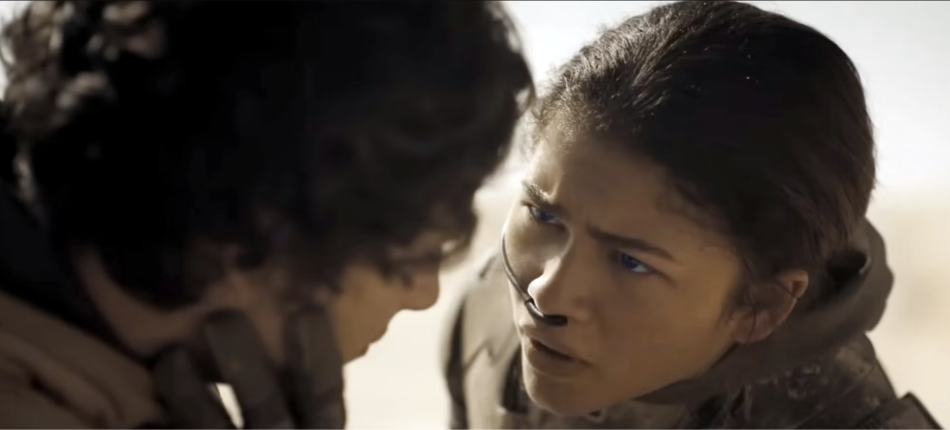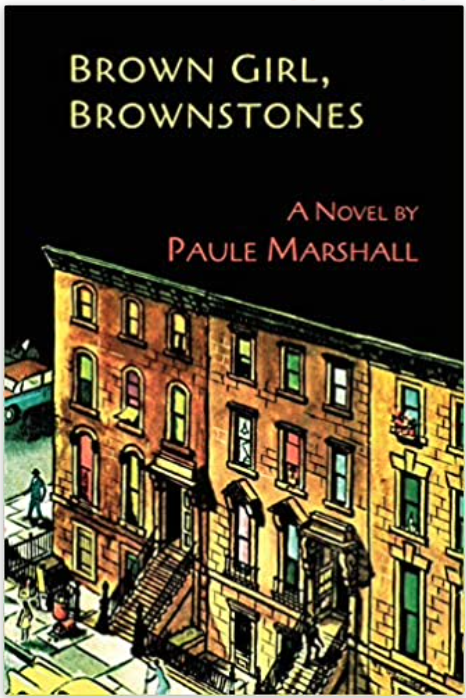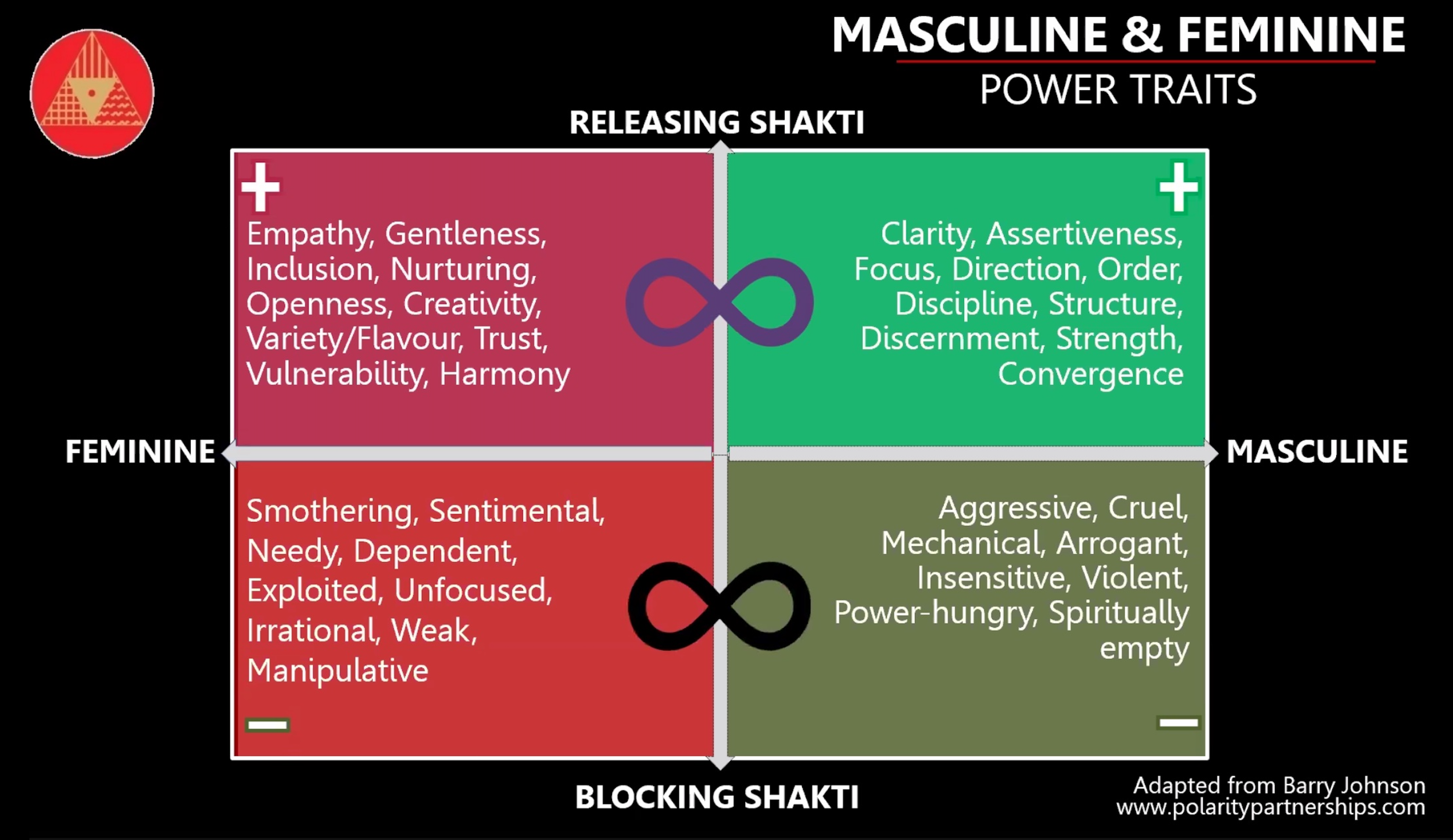Dune, the ‘Spice Agony,’ and Feminine Power
Timothee Chalamet and Zendaya, from Dune: Part Two
After Jewel and I watched the visually stunning Dune: Part Two this weekend, I recalled a blog post from a few years ago where my experience reading the original Frank Herbert science fiction classic series of novels was central. Since this is Women’s History Month, I gladly share it again:
The Power of the Feminine
My first job after graduating from college in 1985 was with Stan Goldberg Associates, a multi-media design company. I recall Stan’s gentle eyes when I sat down for an interview. As a newbie to the job market, I didn’t have much real-world work experience to speak of, so Stan didn’t interview me with that as the primary criterion.
After about 20 minutes, he looked at me, nay, looked through me, and said: “You’re a good person.”
That was that: I got the entry-level gig and began working with a small team of people on the AT&T Infoquest Center project. During lunchtime, I’d walk along Broadway on the Upper West side of Manhattan, a few blocks from the IRT stop at 72nd Street. One afternoon, I walked into the Apthorp Pharmacy, where a beautiful salesperson, Erica, whose parents hailed from Trinidad caught my eye. I feigned interest in learning about male skin care products and eventually got her phone number.
That summer, Erica became my girlfriend. She lived with her parents and two children in a three-story brownstone in the Bedford-Stuyvesant section of Brooklyn. Our relationship was stormy, lasting just for a few years. But I’ll be forever grateful to Erica for three reasons.
First and most importantly—she introduced me to her friend, Jewel Kinch, who, fifteen years later, became my best friend in life and my soul mate in love. Second, Erica urged me to read Brown Girl, Brownstones by Paule Marshall. Third, she introduced me to Frank Herbert’s classic sci-fi Dune series.
Each directly plays into our focus today on the power of the feminine for leadership.
To better understand her cultural heritage, Erica urged me to read Marshall’s classic tale of Caribbean immigrants who made their way into the New World, dreaming, loving, battling, brooding, aspiring, and confronting the social forces of racism and sexism.
I did read the book, falling in love with Marshall’s literary gift of narration, description, and plot. I came to identify with the book’s protagonist, Selina Boyce. As I’d read about her struggles, coming of age in Brooklyn, striving to balance the aspirations and desires of her parents with her own budding identity, I felt a kinship—I was going through a similar phase. Marshall’s literary gift swept me away, making the fact that Selina was a young female character and I a young male less important than what we shared in common. And thanks to Erica’s suggestion, I gained insight not only into a generic “Caribbean American” heritage, but specifically into the cultural richness of Bajans, those born in—or whose ancestry comes from—Barbados.
Paule Marshall
Such cultural insights would serve me well when becoming friends with Jewel, a Bajan, and then courting her. About seven years into our relationship, after realizing that I wanted not a day to go by without her in my life as my beloved, I asked her to marry me on our first cruise together. But that’s a story for another day.
The Hero of Dune and the Bene Gesserit
The other book that Erica recommended, Dune, is an epic science fiction series with a young man, Paul Atriedes, at the center of a heroic tale of a descent from royal power to its triumphant reclamation. But the plot line wasn’t what ultimately caused me to identify with Paul. It was that he, like me, was young, and coming into an understanding of his powers. Those powers were based on the mental and physical training he underwent as a young prince.
Part of that training was in the mysterious ways of the Bene Gesserit, an exclusive sisterhood whose members underwent years of arduous work to develop capacities of mind and body that others in the Dune fictional universe considered magical. A key aspect of Bene Gesserit's initiation was the drinking of a substance to undergo the “spice agony,” where veils of time and lineage are torn asunder, revealing generations of female ancestral knowledge. But Bene Gesserit legend told of a male who would undergo the initiation, a Kwisatz Haderach who would tap into female and male ancestral lines.
Paul Atreides drank the spice, survived the ordeal, and tapped into both ancestral lines!
The lesson for me, as a young man of 22 or 23, was that true power lay in tapping into one’s masculine and feminine qualities.
Masculine and Feminine Lessons for Leadership
Jewel and I attended a virtual Future Capital Workshop on “Leveraging Feminine and Masculine Power in Business” by Nilima Bhat, co-author of Shakti Leadership [a few years ago]. In the yogic tradition, Shakti is the maternal principle of divine energy responsible for creation and creativity. Shiva is the paternal, symbolizing pure consciousness.
At the advent of creation, our beings became split into this Shiva-Shakti duality. Each of us carries Shiva and Shakti within us as the masculine and feminine principles. We carry within us a powerful force that is striving to reunite with our complementary parts. The dissolving of this duality is the aim of yoga, a word that translates into “coming together.”
—Nilima Bhat and Raj Sisodia, Shakti Leadership: Embracing Feminine and Masculine Power in Business
Jewel and I were especially taken by this graphic, which reviews positive and negative traits associated with the masculine and feminine:
Let’s remember the wisdom from the quote above: each of us carries within us the masculine and feminine principles. This is true whether one is a male or female or, I daresay, transgender.
The key, it seems to me, is to lessen the negative aspects of both while accentuating the plus sides through the “spice agony” of deliberate growth and development.
Leaders for the complex future before us will need both, especially since the negative side of the masculine has been ascendent for thousands of years in the West, and even before the West became the cutting edge of modernity. Of course, the negatives of the feminine are present too, but it’s the overweening role of negative masculine traits that has humanity at the brink of species annihilation.
To re-balance and regain equilibrium, we’ll need to emphasize the positive qualities of both the masculine as well as the powerful attributes of the feminine.




